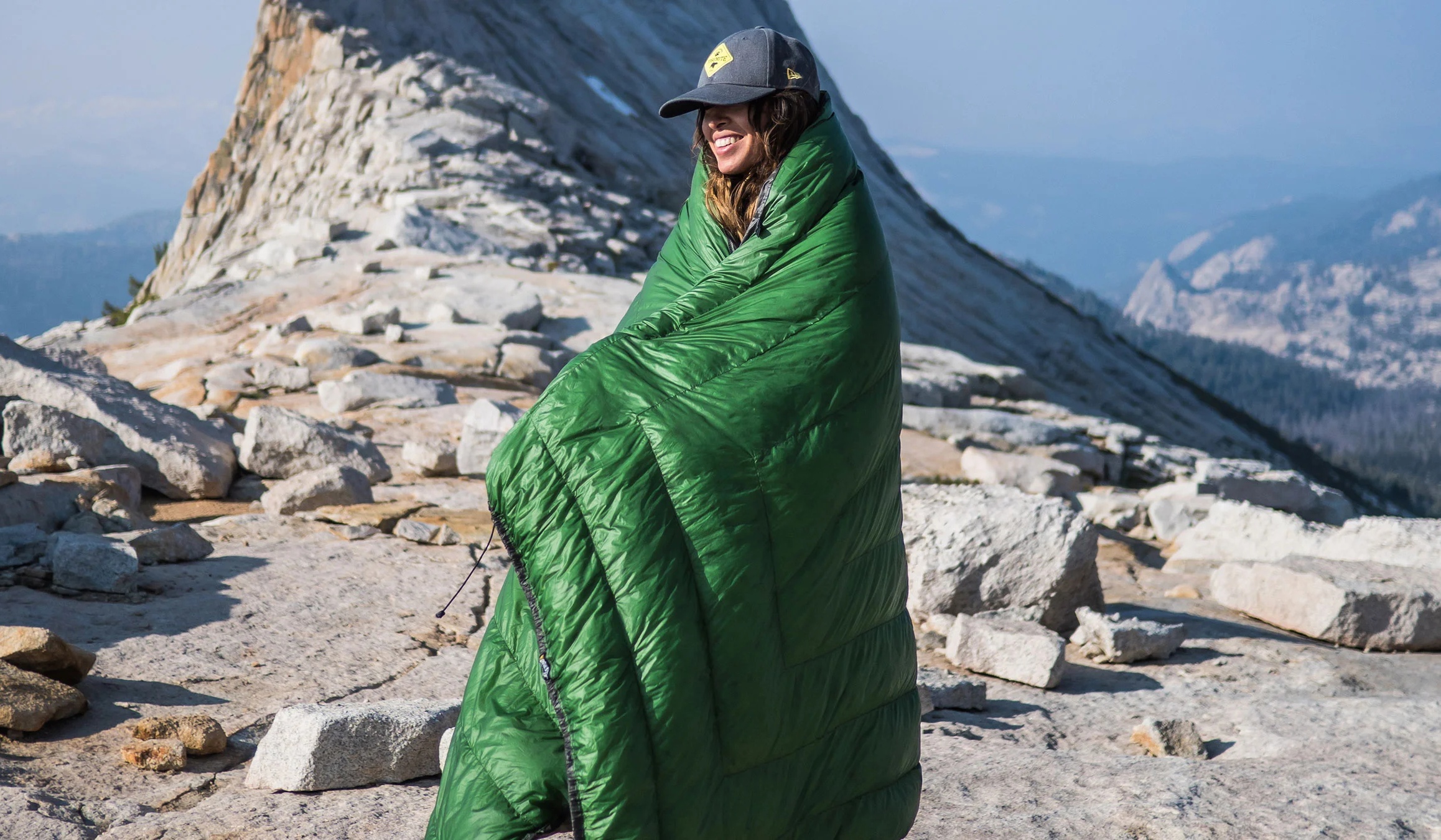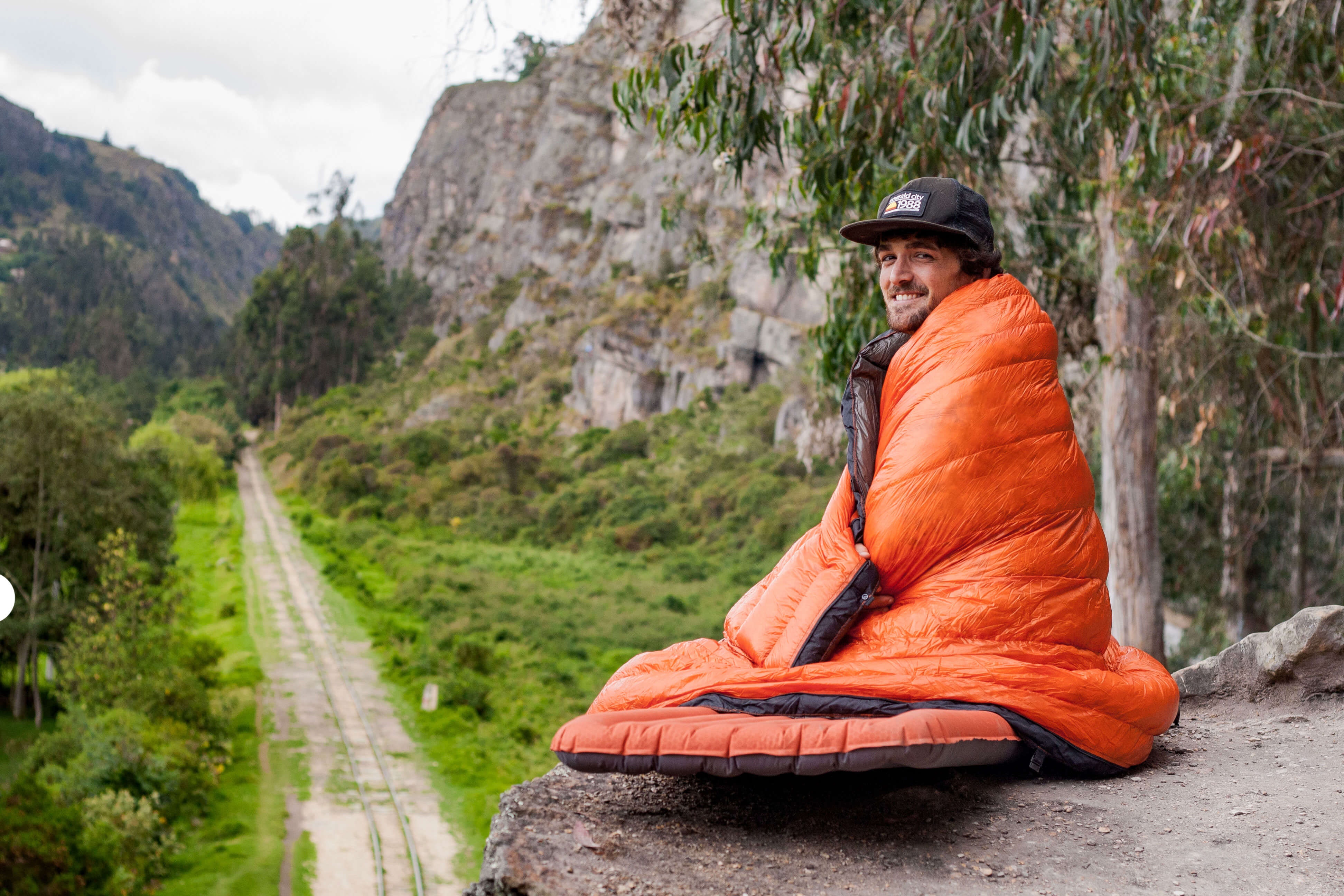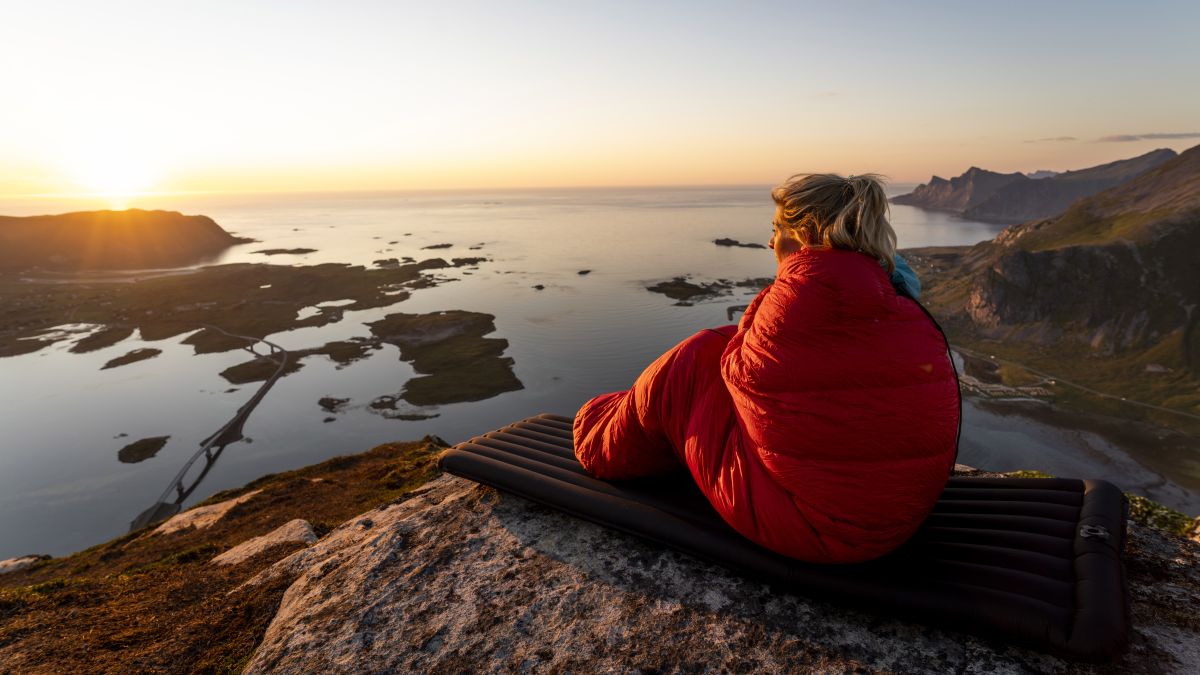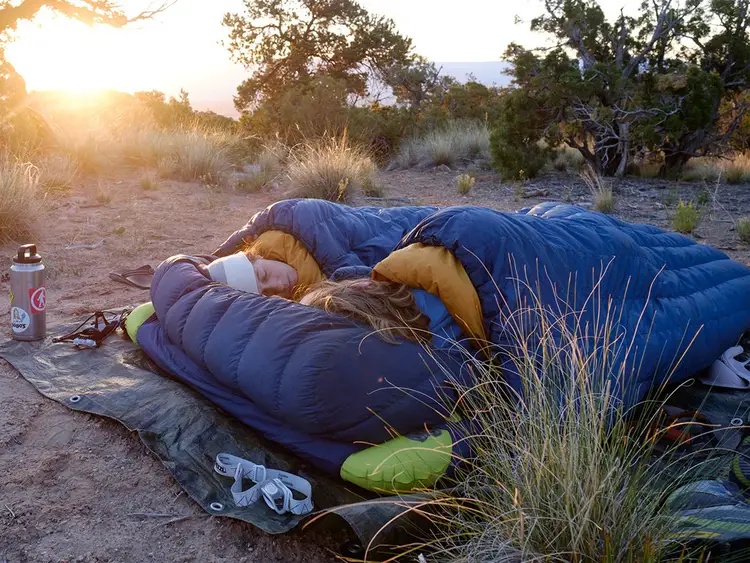Bikepacking has necessities. It requires you to use your brainpower to pack lightly and efficiently. Therefore, to get a blink of sleep on the road, bike-packing sleeping bags play an essential role in every person’s life who travels and loves adventure. Depending on the type of adventure, one must select their desired sleep system. For myself, I prefer to use a quilt for biking and running adventures rather than using a sleeping bag. There are many reasons why quilts work better than traditional sleeping bags (e.g., no zipper to fail or break) but this blog post will focus on the pros and cons of each sleep system; quilt vs. sleeping bag.
Bikepacking sleeping bags follow diverse concepts. It has many variations introduced to its basic design over some time. The concept is fundamental, and it is a portable bed that can be taken to anywhere without burdening your backpack.
But sometimes, you pack and do not have an extra inch to spare. Then comes the innovations to the existing designs, and we have quilts transitioning into sleeping bags.
What is a quilt?
Quilt serves as a cover that keeps your body temperature at optimum while you take a nap or sleep outdoors. Bikepacking quilts are just like indoor quilts, except for water resistance and the ability to combat any harsh conditions that come with sleeping outdoors.
Let’s start with how to use a quilt. A quilt is basically an open blanket that has some means of closing the front side so that air does not freely move in and out while you sleep. The design usually includes zippers, snaps, straps, and drawstrings. I use the Katabatic Alsek 22 and ZPacks Solo Down. For biking adventures, unless it's expected to be extremely cold overnight (below freezing), both quilts work great. Sometimes I use the 2 together for extra insulation just in case! Although these two are rated down to 22 degrees Fahrenheit at their respective temperatures ratings, I find them perfect only if you have quality clothing on or are expecting warmer weather.
The reason is that there is no way to trap heat in between you and the ground. The quilt will always be floating, so to speak, around your body. I like this because when I sleep, my arms tend to get cold (weird right? But it happens!). To remedy this situation, I wear lightweight down gloves.
If it's too hot for me to use the gloves inside the quilt but still want warmth, then I'll just stick my hand out of the quilt! One issue with wearing gloves is that if your hands are damp (from sweat or water), they'll feel cold in them. Another solution would be to bring a stuff sack in case you need to put your gloves in them in order not to let any moisture seep through.

What's good about using a quilt?
The first thing I like to say is that it weighs much less than any sleeping bag you can think of! If you are someone who travels light and fast, then the weight of your gear matters. Thus, getting off the ground with something as simple as an open blanket will do the trick! This is important for bike-packing because not only does it lighten your load but also if you go biking in colder temperatures during the night (or any conditions where warmth is needed), there are high chances that having to wear multiple clothes will make it uncomfortable to ride, so taking them off while riding could be dangerous.
Another pro would be efficiency at regulating temperature. There is no better way for regulating than just sticking an arm or leg out of it when you get too hot! And lastly, quilts are way more comfortable than any sleeping bag at the same weight. This is due to how it fits around your body and gives you extra wiggle room. You don't feel like you're stuck in a holding chamber (which probably also contributes to overheating in some cases).

What's not so good about using a quilt?
First and foremost, I would say that the biggest "con" is the lack of warmth when using one compared to any down sleeping bag at similar weights. There isn’t much insulation behind you when laying on it. Sometimes this may result in cold spines if there is wind against it. Also, in some cases when it gets colder than expected, there is no way to trap in any heat at all. This would be especially annoying for bike-packers who like their legs covered while sleeping (if that's you then perhaps using a mummy-style sleeping bag instead of the quilt with a down bootie might suffice).
Another thing to consider here is whether or not you will need warmth from your head as well! If I'm going cycling during cold weather overnight and want extra warmth on my body, but don't need one on my head, then I'll just use a beanie. It has an awesome design where you can close off both sides with a zipper so that they fit together perfectly without extra space.
Katabatic Quilt
Katabatic Alsek 22 comes with a warmer packing that offers safe sleep in more than three seasons. It is designed in a way that you can adjust its loops around the sleeping pad according to your sleeping system.
Katabatic comes with a zipper that allows you to have a backless design if you want ventilation. It has a loop around the area covering your shoulders, and you feel safe while moving too much.
Also, it has three looping points: one on the shoulder, the second on the area that reaches your hips, and the last at the bottom. If you are in a warmer place, you can forgo the shoulder area and the bottom. The bike pack allows enough air to keep your body temperature regulated. It can be compressed to a small size that will only take the space of a water bottle in your bike-packing system. And it even comes with water-resistant packaging!
What is a sleeping bag?
A sleeping bag is just that: a sleeping bag. It comes with the easiest and the comfortest design that any bike-packer can adapt to.
Bikepacking sleeping bags are also water-resistant, given that they are also used for traveling purposes. Easily commuted, sleeping bags are one of the first choices of a traveler. It is not fair to say that a sleeping bag can't give you more of a home comfort feel. In fact, it gives the best one if you pull the zipper all the way up and have its hood on.
Although there are sleeping bags with half-zipper designs for ventilating purposes, still they come with a hood that helps your head stay warm even without wearing a beanie or a hat. However, it depends on their construction as well - some have less insulation around the feet area which could limit heat intake from them too…
If you don't want to spend on two separate items in your bike-packing system (a quilt and then another one for colder temperatures), then perhaps keep in mind all of these pros and cons about both types of sleeping bags.

What's good about using a sleeping bag?
When it comes to the basics, sleeping bags are in totally different levels in terms of design in comparison with quilts. Sleeping bags have insulation that gives heat regardless of positioning - in case you're on your side or on your back. That is not the case when using a quilt because usually they are designed for just one position - lying down. The sleeping bag is very convenient to use for both one and two people. Sleeping bags for couples are also very common.
Also, what's good about using a sleeping bag is its warmth regardless of wind direction/positioning. While being trapped inside your quilt, if there's cold wind against it then you'll feel it pretty well when you go to sleep since there will be no insulation whatsoever! It can also reach around your neck and cover your head (depending on the design).

What's not good about using a sleeping bag?
Sleeping bags are bulky especially when compressed, meaning you'll need to get the space for it inside your seat pack. Also, even if they come with different temperature levels, it can be completely uncomfortable around your body while moving too much during sleep - that is why many people use quilts instead of just a sleeping bag.
ZPacks sleeping bags
ZPacks solo down sleeping bags is the dream of a traveler. They have it all: the quilt, the sleeping pad, and the zipper. All in one!
A solo Zpack is a quilt that goes around your body and makes a burrito. You are tucked in and adjust the zipper according to how you want it. It is easily compressed to the size of a large water bottle.
Katabatic Alsek 22 vs ZPacks Solo Down
These two bike-packing sleeping covers are ideal for any traveler that wants to travel light and efficiently. However, backpacking sleeping bags are more space-friendly since you do not have to worry about the sleeping pad.
Katabatic Alsek 22 and ZPacks Solo Down work almost the same and are harsh weather friendly, but backpacking sleeping bags win the race when it comes to comfort and ease. If you are a heavy sleeper, you want to drop dead and still feel safe and tucked in, then definitely we already have the sleeping solution for you.
How about quilt vs. sleeping bag insulation?
Quilts are better than sleeping bags in terms of their design and weight (most probably). They also come with a high level of comfort which makes them worth trying! On the other hand, sleeping bags provide more warmth but at cost of extra weight because usually they are designed with insulation to cover the entire body; this one is not present on quilts.
To answer the question, quilts just have more advantages over sleeping bags in case you are doing bike-packing. While you might be cramped inside your sleeping bag during sleep, then it will be a terrible choice, while if you tend to move often then maybe go with some quilts that allow movement. You decide!
Both Bikepacking quilts and sleeping bags are made light, but the main difference is that bike-packing sleeping back has more insulation than a bike-packing quilt for cold weather. However, it lacks in the ventilating system compared to modern backpack quilts. To conclude everything about this topic, I would like to say that both of them play an important role in making you feel comfortable at night while overnight riding, but the choice will depend on your own preferences!